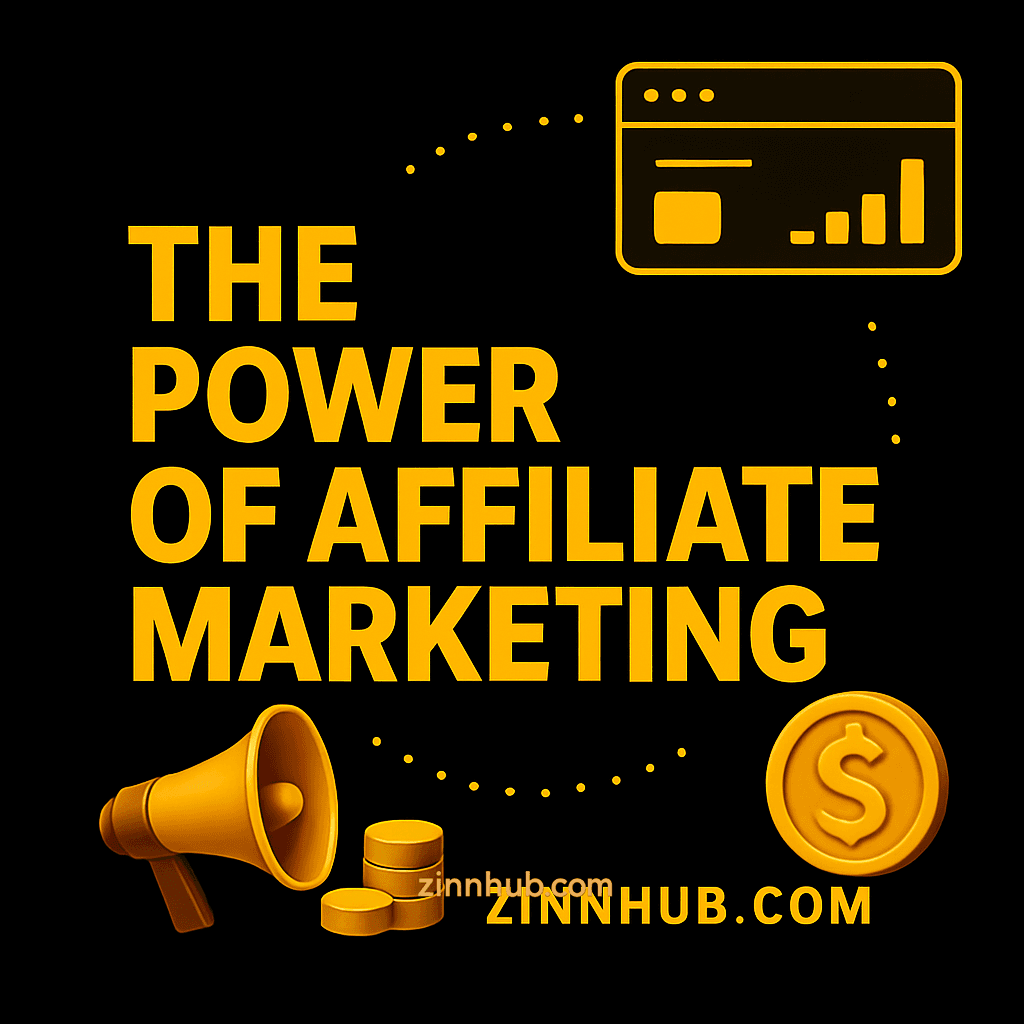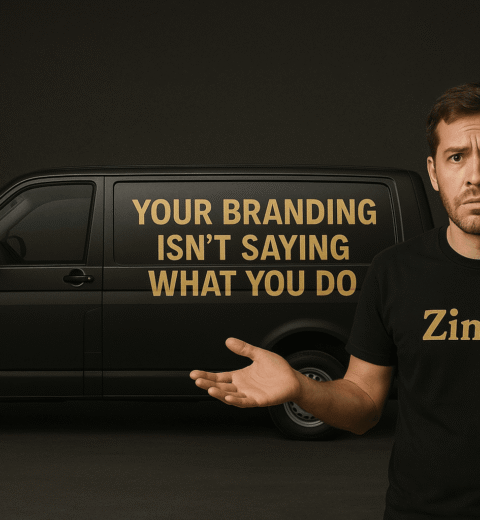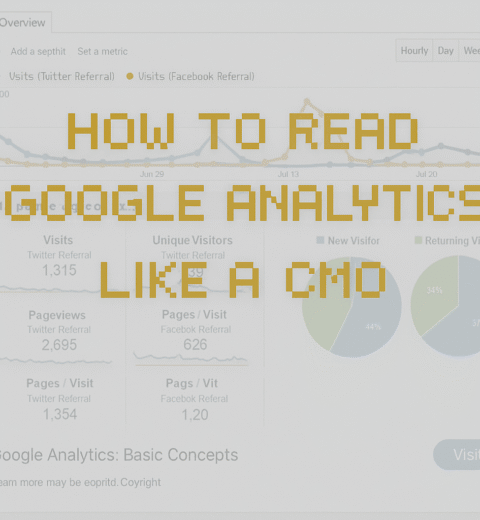Table of Contents
- 🔹 What Is Affiliate Marketing?
- 🔸 Getting Started: A Beginner’s Roadmap
- ✅ Affiliate Readiness Checklist
- 🔸 The Secret Sauce: Passive Income Potential
- 🔸 Building Trust: It’s More Than Just Selling
- 🔸 Real People, Real Results
- 🔸 Choosing the Right Affiliate Programmes
- 🔸 How to Track & Improve Your Affiliate Results
- 🔸 Affiliate Disclosure Rules You Must Follow
- 🔸 What Kind of Content Works Best for Affiliate Marketing?
- 🔸 What to Expect in Your First Year as an Affiliate Marketer
- 🔸 How to Grow an Audience That Buys
- 🔸 Basic SEO for Affiliate Blog Posts
- 🔸 Going Beyond: Direct Brand Partnerships
- 🔸 Don’t Forget: Taxes on Affiliate Income
- 🔸 Common Pitfalls to Avoid
- 🔸 The Future of Affiliate Marketing
- 🔸 Final Thoughts: Start Small, Stay Consistent
You’ve probably clicked on a product link in a blog or swiped up on a recommendation from your favourite content creator. That’s affiliate marketing — a powerful way people earn money online without even selling their own product. But how does it actually work? And more importantly — can you do it too?
Short answer: yes. And you don’t need a massive following, a tech degree, or even a website (though that helps). Let’s walk through exactly how affiliate marketing works and how you can start using it to your advantage.
🔹 What Is Affiliate Marketing?
In simple terms:
- You recommend a product or service using a special link
- If someone clicks your link and buys something, you earn a small commission
- You don’t need to handle stock, payments, or customer service
It’s like recommending your favourite coffee shop to a friend — but getting a thank-you bonus every time they go.
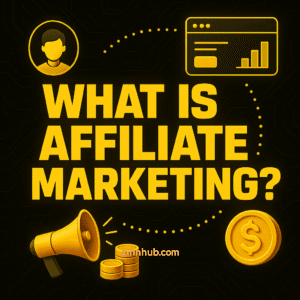
🔸 Getting Started: A Beginner’s Roadmap
If you’re new to affiliate marketing, these are the essential first steps to get you moving in the right direction.
1. Choose Your Niche
Think about what you already know or enjoy — beauty, tech, personal finance, fitness. Narrowing your focus helps build trust with your audience.
2. Pick Your Platform
You don’t need a fancy website right away. Start with what you already use:
- A blog or WordPress site
- YouTube or TikTok
- Instagram or Pinterest
- An email newsletter
3. Join Affiliate Programmes
Here are some beginner-friendly networks you can sign up to:
- Amazon Associates
- Awin, ShareASale, Impact
- CJ Affiliate, Rakuten
- ClickBank, PartnerStack
- Etsy, Teachable, Shopify
🧩 Tip: Pick just a couple to start with. Focus on quality, not quantity.
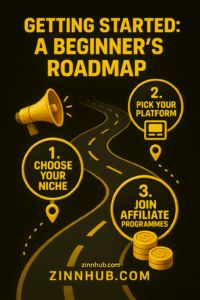
✅ Affiliate Readiness Checklist
Not sure if you’re ready to jump in? Go through this quick checklist first:
✔️ I’ve picked a clear niche I enjoy
✔️ I’m set up on at least one platform (blog, YouTube, etc.)
✔️ I’ve joined at least one affiliate programme
✔️ I know how affiliate links and commissions work
✔️ I’ve planned content that solves a real problem
✔️ I understand how to disclose affiliate links clearly
✔️ I’m willing to review my results and make improvements
✔️ I’ve set realistic goals for the next 6–12 months
Ticked five or more? You’re good to go.
👉 Check out our latest guide: 50+ Affiliate Programmes Worth Joining in 2025
🔸 The Secret Sauce: Passive Income Potential
The dream of affiliate marketing? Earning while you sleep. And while that takes time, it’s absolutely possible.
Imagine writing a helpful blog post or creating a YouTube video comparing two tools. That content stays online. People find it through Google, watch it weeks (or months) later, and click your links. Boom — you’ve just made money from something you did weeks ago.
That’s what we call evergreen content — and it’s gold.

🔸 Building Trust: It’s More Than Just Selling
People don’t want to be sold to. They want to be helped.
Affiliate marketing works best when you:
- Recommend things you genuinely use or like
- Explain why it’s useful, not just that it exists
- Disclose your affiliate links honestly (it’s the law and it builds trust)
Treat your audience like real people — because they are.
🔸 Real People, Real Results
Let’s look at how different people use affiliate marketing in real life:
- Sophie, a mum in Manchester, shares reviews of eco-friendly baby gear on her blog — and earns from the links
- Dan, a personal trainer in Leeds, links to his favourite supplements under his YouTube workout videos
- Minho, a university student, uses TikTok to share student budgeting tips, with affiliate links for apps and tools
They’re not famous — they’re focused.

🔸 Choosing the Right Affiliate Programmes
Not all affiliate programmes are created equal. Here’s what to think about:
- Commission rate – Higher isn’t always better, but it helps
- Cookie duration – Longer = more time for your referrals to convert
- Payment threshold – Some require you to earn more before they pay out
- Niche fit – Does the product make sense for your audience?
📊 Still unsure where to start? Here’s a side-by-side comparison of some of the most popular affiliate programmes you can begin with:
| Program | Commission Rate | Cookie Duration | Payment Threshold | Best For |
|---|---|---|---|---|
| Amazon Associates | 1–10% (varies by category) | 24 hours | £25 | Beginners, product reviewers |
| Awin | 5–50% (merchant dependent) | Up to 30 days | £20 | UK/EU focused content |
| ShareASale | 5–30% (merchant dependent) | 30–90 days | $50 | Mid-level affiliates, diverse niches |
| Impact | 5–30% (varies by merchant) | 30–90 days | $25 | Growth-stage affiliates, various niches |
| CJ Affiliate | 5–30% (merchant dependent) | 30–45 days | $50 | Established affiliates, premium brands |
| Rakuten Advertising | 5–20% (merchant dependent) | Up to 60 days | $50 | Global brands, fashion, travel |
| ClickBank | 30–75% (digital products) | 60 days | $10 | Digital product promoters |
| PartnerStack | 20–40% (SaaS products) | 30–120 days | $25 | Tech bloggers, SaaS reviewers |
| Etsy | 4% per order | 30 days | $20 | Craft/handmade product bloggers |
| Shopify | $58 flat rate + $2000 enterprise | 30 days | $25 | E-commerce content creators |
Pick 2–3 and see what works for you.
🔸 How to Track & Improve Your Affiliate Results
You can’t improve what you don’t measure.
Key things to watch:
- Click-through rate (CTR) – Are people clicking your links?
- Conversion rate – Are those clicks turning into sales?
- Earnings per click (EPC) – How much are you making per visitor?
Tools that help:
- Google Analytics
- Pretty Links or ThirstyAffiliates
- Affiliate dashboards (each network provides one)
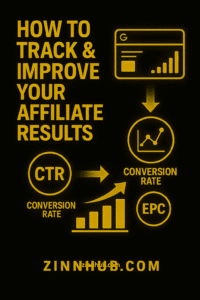
🔸 Affiliate Disclosure Rules You Must Follow
You need to tell people you might earn a commission — it’s the law.
In the UK, the ASA (Advertising Standards Authority) and in the US, the FTC (Federal Trade Comission) say you must:
- Disclose before the first affiliate link
- Use clear, simple language (e.g., “This post contains affiliate links. If you click and buy, I may earn a commission — at no extra cost to you.”)
- Make the disclosure visible — don’t hide it in footers or tiny print
🔸 What Kind of Content Works Best for Affiliate Marketing?
Not all content performs equally. Here are formats that tend to convert well:
- “Best of” lists (e.g. Best productivity tools for freelancers)
- Product comparisons (Tool A vs Tool B)
- Tutorials showing a product in action
- Reviews with your honest opinion
- Problem-solution posts (e.g. Struggling to focus? Try these 3 tools…)
🔸 What to Expect in Your First Year as an Affiliate Marketer
This isn’t a get-rich-quick scheme — but it works if you stick with it.
- Months 1–3: Set up your platform, create helpful content, join programmes
- Months 4–6: First clicks and small commissions; test and tweak your content
- Months 7–12: Improve SEO, scale content, build momentum and consistency
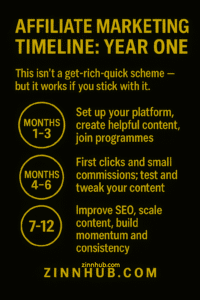
🔸 How to Grow an Audience That Buys
Affiliate marketing without an audience is like fishing without water. Here’s how to grow:
- Blog: Post useful, SEO-optimised content regularly
- YouTube: Create how-tos and reviews, reply to every comment
- TikTok/Instagram: Use stories and Reels to show real results or demos
- Email list: Send updates, product tips, or exclusive discounts
🔸 Basic SEO for Affiliate Blog Posts
Want Google to send you free traffic forever? Learn the basics of SEO:
- Use specific keywords with intent (e.g. “best camera under £500”)
- Write helpful meta titles and descriptions
- Link to your other blog posts and categories
- Optimise images and ensure your site works well on mobile
🔸 Going Beyond: Direct Brand Partnerships
Once you’ve proven yourself as an affiliate, don’t be afraid to reach out to brands directly.
- Negotiate better commission rates
- Ask for unique discount codes
- Offer to create content or UGC (user-generated content) for them
You’re not just an affiliate — you’re a partner.
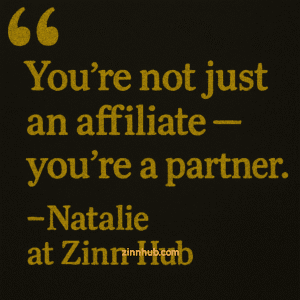
🔸 Don’t Forget: Taxes on Affiliate Income
Affiliate income counts as real income — and it must be declared.
- In the UK, you’ll need to register for self-assessment if you earn over £1,000
- Track your earnings and expenses
- Set aside 20–30% of your income for tax
- Consider accounting tools like Xero, QuickBooks, or even a spreadsheet
🔸 Common Pitfalls to Avoid
Watch out for these beginner mistakes:
- Dumping affiliate links everywhere with no context
- Promoting random products you’ve never used
- Forgetting to disclose your links
- Giving up after a few weeks
Be consistent. Be helpful. The rest will follow.
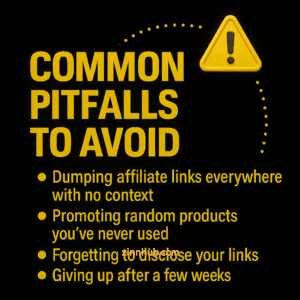
🔸 The Future of Affiliate Marketing
The affiliate world is changing fast. Stay ahead by watching these trends:
- More content creators using affiliate marketing as a core income stream
- AI tools helping with tracking, copywriting, and optimisation
- Brands favouring micro-influencers and content creators over paid ads
🔸 Final Thoughts: Start Small, Stay Consistent
You don’t have to be perfect. You just have to start. Pick a niche. Choose one platform. Write your first post or record your first video.
Then do it again. And again. Affiliate marketing isn’t about perfection. It’s about progress. Every post, video, or link you share builds momentum. Every small win compounds over time.
Show up consistently — and let your results speak for themselves. Affiliate marketing rewards consistency — not perfection. Your future self will thank you.

